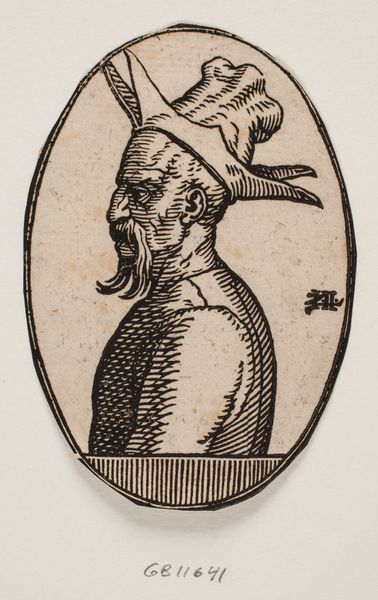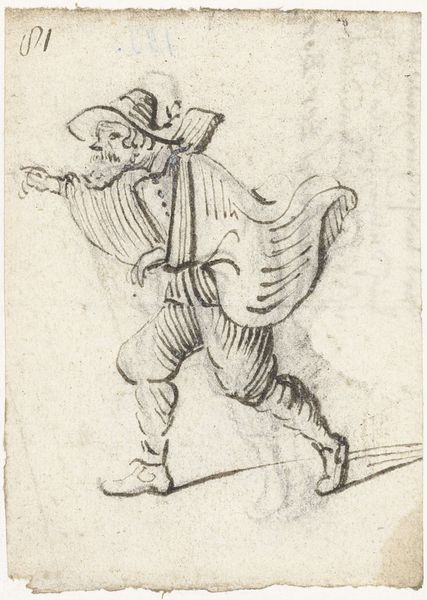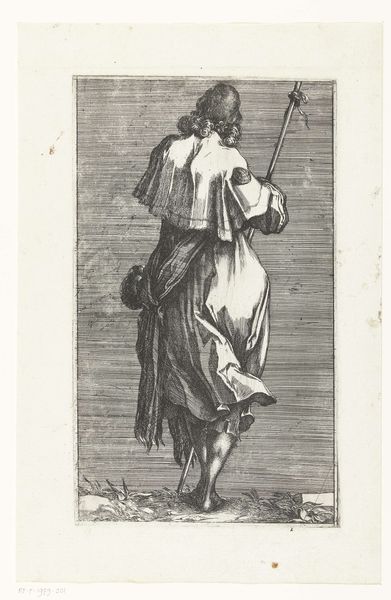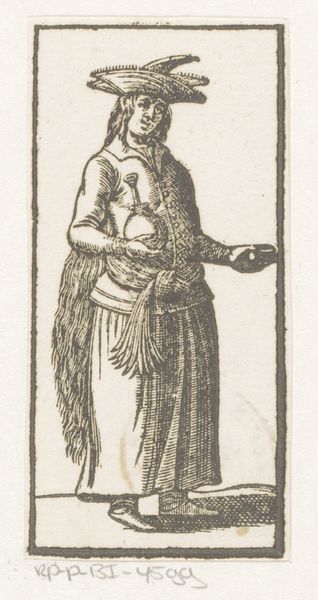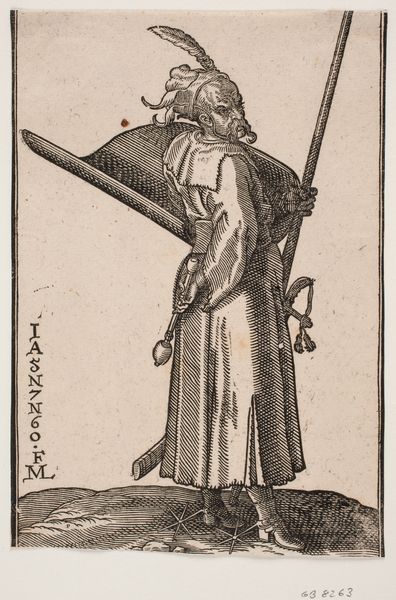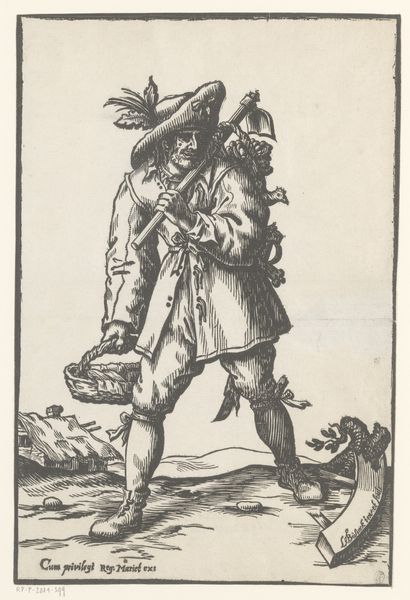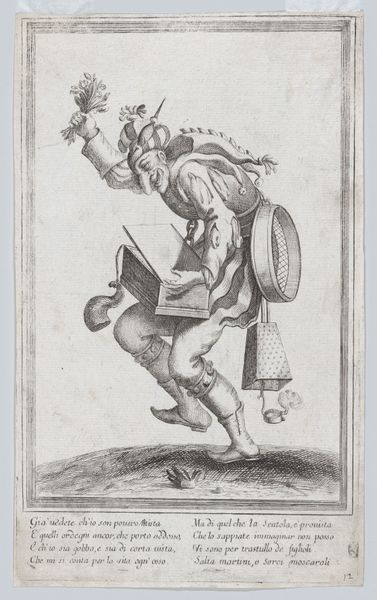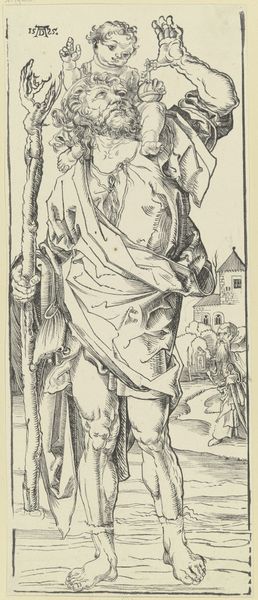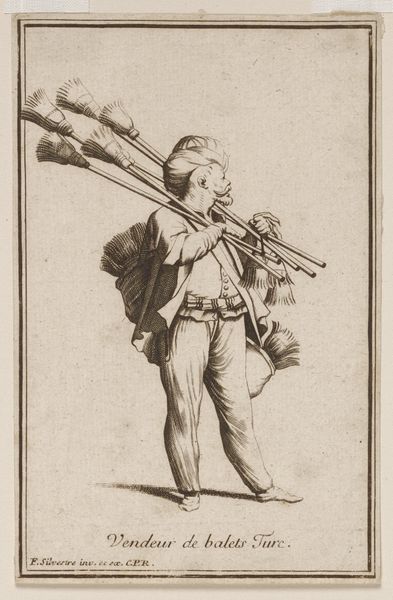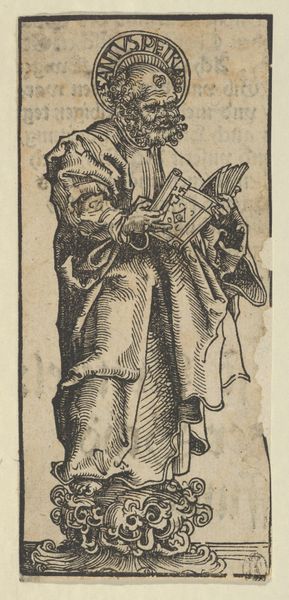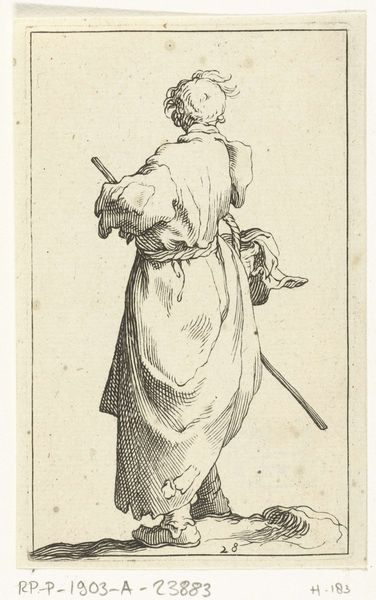
print, woodcut
# print
#
landscape
#
mannerism
#
figuration
#
woodcut
#
genre-painting
Dimensions: 188 mm (height) x 113 mm (width) (bladmaal)
Curator: Here we have a woodcut from 1582 by Melchior Lorck entitled "Kostesælger." Editor: There's such an evocative weight to this figure. You immediately feel the burden she carries, both physically in that massive woven basket and maybe even psychologically, looking at her downward gaze. Curator: Absolutely. Lorck captures this figure within a strong art historical context. He operated within the style of mannerism while producing figural representations, genre scenes and landscapes. In 16th century Europe, we start seeing representations of commoners who are also merchants of some kind, rendered sympathetically. Editor: It's impossible not to read the class dynamics in the image, but I’m also wondering how much of her visual appearance adheres to a visual culture about labor and gender in the period? The head covering suggests modesty or perhaps her lower social status, further highlighted by the oversized basket and rough walking stick. Curator: It makes me think of how deeply embedded commerce was into daily life, particularly for women in that time period. Also think of the fact that the print medium made such imagery so easily available. There's a political element there. Editor: Precisely! And perhaps Lorck is also pushing back against traditional depictions of women in art. Rather than an idealized noblewoman, he gives us the honest, unglamorized portrayal of labor. What might that tell us about his own politics or social consciousness? Or the society he lived in? Curator: I see a clear indication of his perception of society at the time. Her business could have easily been seen as a metaphor of some kind as the woman balances a very heavy burden upon her back. It makes you wonder about a gender reading, as you suggest. Editor: Right, she becomes symbolic beyond her immediate identity, encapsulating broader themes of inequality and endurance. A seemingly simple street vendor embodies deeper socio-economic and perhaps gendered struggles, visualized centuries ago. Curator: It also highlights the ongoing conversation regarding labor, class, and the representations of women, a discussion which reverberates through art history and our contemporary moment. Thank you for those powerful contextual connections. Editor: My pleasure. It is always an enriching dialogue. Thank you for providing context and nuance to these old works so that they can remain ever relevant today.
Comments
No comments
Be the first to comment and join the conversation on the ultimate creative platform.
